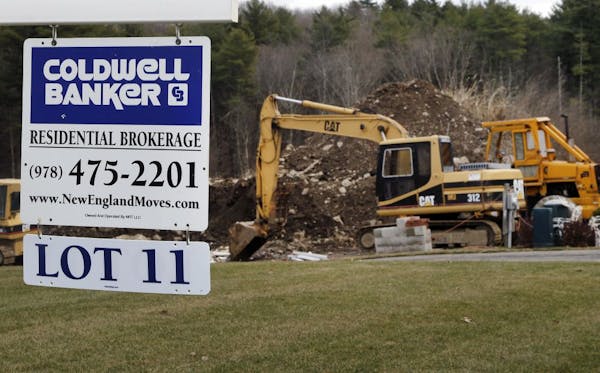During the depths of the recession, Lori Gordon rented out a room in her Scandia, Minn., house to a graduate student she found on Craigslist.
"It helped me over that hump when things were so bad," said Gordon, who was struggling to re-ignite a career she put on hold to care for her dying husband.
Her renter has since moved out, and while Gordon enjoyed having a roommate, she isn't looking for another.
The recession prompted more Americans to double up -- renting rooms or moving in with Mom and Dad -- but now there's evidence that at least some of those people are moving on.
The number of "shared households" fell in 2011, the first drop since the recession began, according to a recent report from the U.S. Census Bureau, which attributed the decrease to an improving economy.
Gordon's decision to not seek another renter stems from a change in her financial picture. "I've gotten my steam back," she said. She's launched a new career as a personal chef and dessert-sauce entrepreneur.
Her business, Lori's Fudge Sauce, is doing so well that she's seeing a chiropractor for her "stirring arm."
"I think everybody's gaining confidence" in the economy, she said.
National statistics support her upbeat perspective. The number of homes that included an "additional adult" peaked in 2010 at 19.4 percent. In 2007, before the start of the recession, 17.6 percent of households were shared.
A permanent change
While shared households of many types rose in number during the recession, the most common arrangement involved a young adult living with a parent. Even though the economy as a whole appears to be gradually improving, its lingering effects combined with sociological shifts are likely to keep many young people under their parents' roof.
Nearly half of all "additional adults" in a household were grown children of the householder, according to census data.
Not surprisingly, the youngest adults (ages 18 to 24) were the most likely to live in a shared household. Nationwide, 35 percent of "additional adults" were in that demographic group; in Minnesota, the figure was 30.8 percent, according to 2011 data. (Students enrolled in school are not counted as "additional adults.")
But older young adults (ages 25 to 34) also are sharing households in large numbers. In 2011, they represented 30.5 percent of "additional adults" nationwide and 20.6 percent in Minnesota.
The sluggish job market, high rents and the rise of unpaid and low-paying internships are among the reasons so many young adults are living in shared households, say the experts. Unemployed and underemployed young adults simply don't earn enough money to afford a place of their own.
"The unemployment numbers for young people are still very high," said Amy Lynch, generational consultant for Bridgeworks in Minneapolis. "Unemployment has a lot to do with those young people living at home."
The Twin Cities metro area is a particularly challenging place to find an affordable rental, second only to New York City among the nation's worst cities to rent an apartment, according to Forbes magazine.
Economics are a factor, but they aren't the only reason so many young adults are currently living with a parent or parents, according to Bill Doherty, a professor of family social science at the University of Minnesota. Other longer-term trends are contributing to a rise in multigenerational households and will continue to do so.
"Even if the economy was going gangbusters, we're not going back to where we were 25 or 30 years ago," Doherty said.
Postponing marriage and family formation is now an established trend among today's younger generation, Doherty added.
"Family, to them, is their parents," he said. "You go back a generation, and more young people were getting married. It's much more difficult to live with Mom and Dad if you're married."
The rise in unmarried couples living together also results in more young adults boomeranging back home to live with a parent, even if just temporarily. "This generation is cohabiting more, and those [relationships] break up on a regular basis," Doherty said. "In the past, if you were dating and broke up, you both still had a place. Now you break up and you're homeless -- you're moving back home."
More togetherness doesn't mean parents and their grown children are thrilled with multigenerational living. "Most young adults prefer to live on their own, and most parents prefer it," Doherty said. But it's a more acceptable living arrangement than it was to earlier generations, he added. "This generation is more into their kids, and it's easier for the kids to live at home with their parents."
Kim Palmer • 612-673-4784

Minnesota Sports Hall of Fame: A class-by-class list of all members

This retired journalist changed professional wrestling from Mankato

